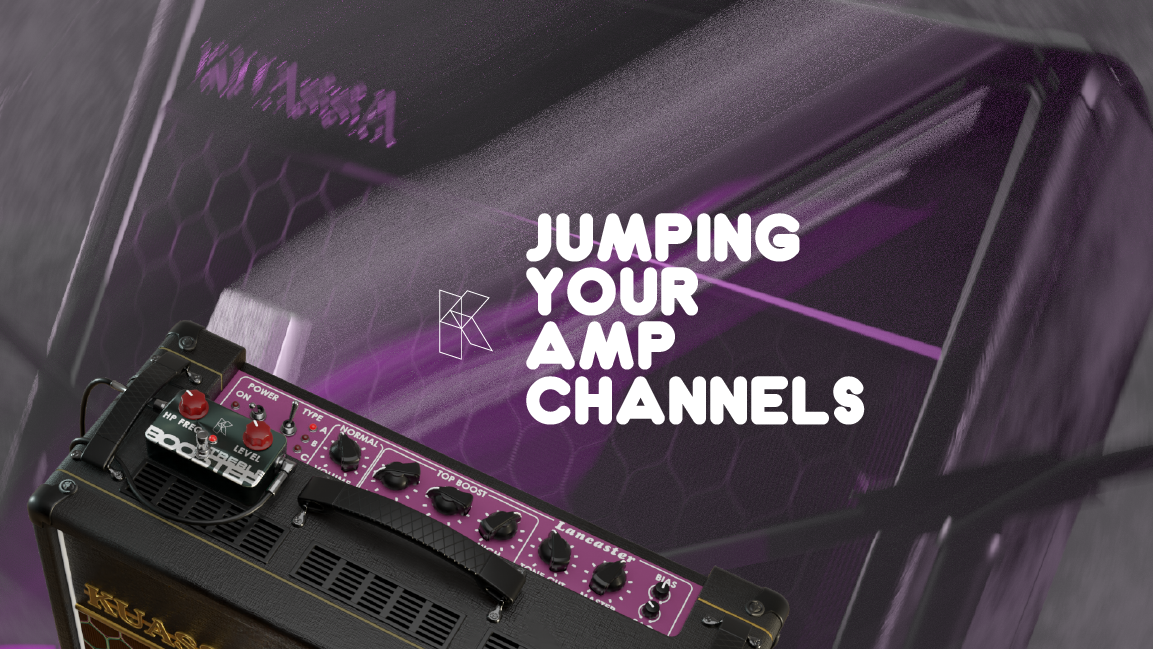From a patch cable on the inputs of tube amps to a modern and elegant approach in Kuassa Amplifikation Lancaster amp sim.
Why do old classic guitar amps have 2, 4 or even 6 inputs?
Long ago in the early history of the musicians oriented amplifiers, the two channels were provided as an option to have players play together sharing the same amp. Another use of the multiple channel channels is: Dark guitar into the Bright channel, Bright guitar into the Normal channel. Say, a Les Paul or Strat. There are also some amps that are capable of driving a guitar and a bass guitar.
Most amps are equipped with two channels which are called Hi and Lo inputs. But there are also other namings from different brands. A few examples are:
- Bright – Normal
- Brilliant – Normal
- Reverb – Normal
- TopBoost – Normal.
Later on, guitarists discovered that by putting a jumper on one of the channels to the other with small patch cable, players could gain more “mojo”, power, tonal varieties, and even more saturated gain and the following distortion. It happens because each channel is independent and voiced differently, also the low and hi inputs are designed with different impedance.
The inputs on each channel are parallel. So, connecting into one and passing the signal to the other is a simple thing. Sending the signal out from the extra input jack with a patch cable and connecting it to the other input channel will put your guitar signal through both channels simultaneously.
Having the well rounded tone of the normal channel, combined with the shimmery highs of the bright or top boost channel is an amazing combination. You get a more saturated signal and achieve more attack and brightness on your tone.
Let’s try on our amp simulator Amplifikation Lancaster. The guitar input is going to both channels simultaneously. In our amp simulation there’s no need to patch cables. The input feeds directly the two channels. Or we can say: It’s already patched for you!

A good crunchy setting with “restored” low end from the normal channel
The Normal channel has more low frequency content and less gain than the top boost channel.
The more you increase the Normal channel Volume, it will mix with the Top Boost channel thus more low end and mids are presented into the signal and fattens up the tone. The opposite is to brighten up the normal channel by adding a little top end from the High knob on the Top Boost channel. You can have any combination between them. Blending both channel volume controls at any level, will give you many complex and rich sounds with different results.
TIP: If you want to use only one of them, just turn the volume of the channel you don’t want to use to zero!
As simple as that!

A bluesy setting with lots of saturation from the top boost channel and a little help from the normal channel
The beauty of using the amp simulator directly in your DAW project and blending the channels together from the volume controls, is giving you a quick and easy way to achieve amazing tone in seconds and instant recall settings by saving your own custom presets.
Coming from an era when people would share just one amp and later discovering more ways to shape the guitar tone with just a simple “hack” of using a short cable to today’s technology when everything is at the tip of our fingertips, this jumper trick is a big part of many great guitar tones, heard in countless recordings.
Using two channels together by patching them is the best way to utilize classic amplifiers design and create amazing music!


